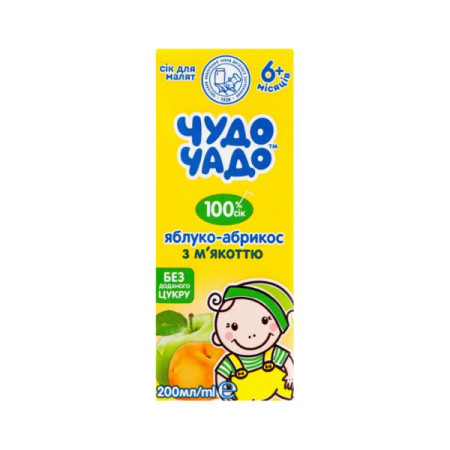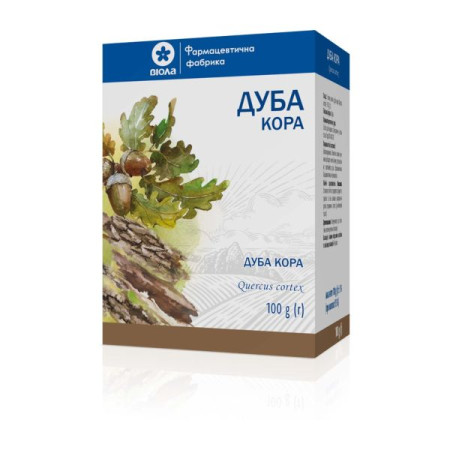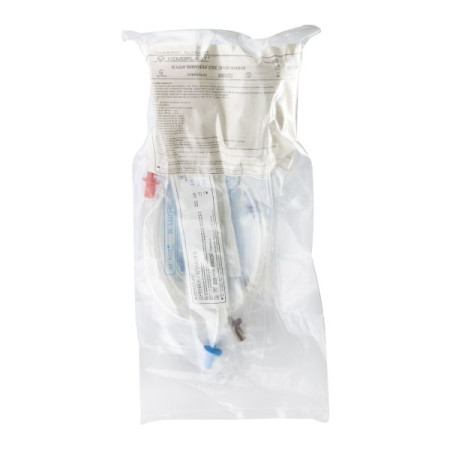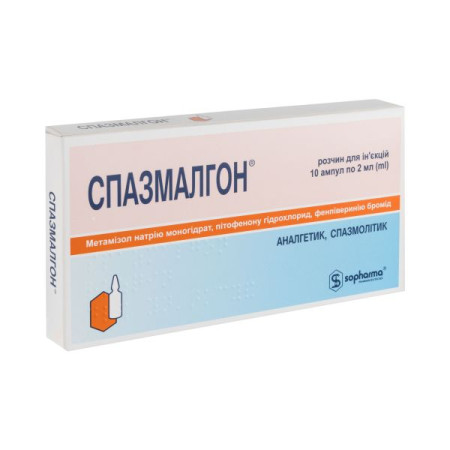Baldosil capsules 4 mg container No. 30

Instructions for use Baldosil capsules 4 mg container No. 30
Composition
active ingredient: silodosin;
1 capsule contains 4 mg of silodosin;
excipients: sorbitol, pregelatinized starch, sodium stearyl fumarate; capsule shell: gelatin, purified water, titanium dioxide (E 171), black ink.
Dosage form
Capsules.
Main physicochemical properties: hard gelatin capsules, size "3" with a white body and a white cap, with black markings "H" on the cap and "S1" on the body, filled with white or almost white powder.
Pharmacotherapeutic group
α-Adrenoceptor antagonists. Silodosin.
ATX code G04C A04.
Pharmacological properties
Pharmacodynamics.
Mechanism of action: Silodosin is a selective antagonist of postsynaptic alpha-1-adrenergic receptors, which are found primarily in the prostate gland, bladder fundus, bladder neck, prostatic capsule, and prostatic urethra. Blockade of these alpha-1-adrenergic receptors results in relaxation of smooth muscle in these tissues, which improves urine flow and reduces symptoms of benign prostatic hyperplasia (BPH).
An in vitro study was conducted to examine the binding affinity of silodosin to three subtypes of alpha-1 adrenoceptors (alpha-1A, alpha-1B, and alpha-1D). The results of the study showed that silodosin binds with high affinity to the alpha-1A subtype.
In clinical studies, no significant decrease in supine blood pressure was observed in patients treated with silodosin.
Silodosin at doses of 8 mg and 24 mg per day compared to placebo had no statistically significant effect on ECG intervals or cardiac repolarization.
Pharmacokinetics.
The pharmacokinetics of silodosin have been evaluated in adult male patients, healthy or with BPH, after single and/or multiple doses of 0.1 mg to 24 mg per day. The pharmacokinetics of silodosin are linear over this dose range.
Absorption
Silodosin is well absorbed after oral administration, the absorption rate being proportional to the dose administered. After oral administration of 8 mg of the drug per day, the maximum concentration (Cmax) of silodosin was 61.6 ± 27.54 ng/ml; the mean time to reach Cmax in serum (tmax) was 2.6 hours; the elimination half-life (t1/2) was 13.3 ± 8.07 hours. The absolute bioavailability of the drug is approximately 32%.
The impact of food
The maximal effect of food (i.e., co-administration of a high-calorie, high-fat meal) on the pharmacokinetics of silodosin has not been evaluated. The effect of a moderate-fat, moderate-calorie meal was variable and decreased silodosin Cmax by approximately 18–43% and AUC by 4–49% in three different studies. In a study to evaluate the relative bioavailability of an 8 mg silodosin capsule sprinkled with applesauce compared to the product administered as an intact capsule, silodosin was found to be bioequivalent based on AUC0–24 and Cmax when administered by these routes.
Distribution
The apparent volume of distribution of silodosin is 49.5 L, and it is approximately 97% bound to blood proteins.
Metabolism
Silodosin is extensively metabolized by glucuronidation, mediated by alcohol and aldehyde dehydrogenase and cytochrome P450 3A4 (CYP3A4). The major metabolite of silodosin is the glucuronide conjugate (KMD-3213G), which is formed by direct conjugation of silodosin by UDP-glucuronosyltransferase 2B7 (UGT2B7). Concomitant use with UGT2B7 inhibitors (e.g. probenecid, valproic acid, fluconazole) may potentially increase the exposure of silodosin. KMD-3213G, which has been shown to be active in vitro, has a prolonged half-life (approximately 24 hours) and achieves plasma concentrations (AUC) approximately four times higher than silodosin. The second major metabolite (KMD-3293) is formed by alcohol and aldehyde dehydrogenases and reaches plasma concentrations similar to silodosin. KMD-3293 is not expected to contribute significantly to the overall pharmacological activity of silodosin.
Selection
After 10 days of oral administration of 14C-labeled silodosin, approximately 33.5% of the radiolabel was recovered in urine and 54.9% in feces. After intravenous administration, the plasma clearance of silodosin was approximately 10 L/h.
Special patient groups
Race: No specific clinical studies have been conducted to investigate the effect of race.
Elderly patients. In a study comparing elderly men (mean age 69 years) and young men (mean age 24 years), exposure (AUC) and half-life of silodosin were approximately 15% and 20% higher, respectively, in elderly patients compared to young patients. No difference in Cmax of silodosin was observed. In another study, no significant differences in safety or efficacy were found between elderly and young patients.
Renal impairment: In a study in subjects with moderate renal impairment, the total AUC, Cmax, and half-life of silodosin (bound and unbound) were 3.2-, 3.1-, and 2-fold higher, respectively, compared to subjects with normal renal function. The AUC and Cmax of unbound silodosin were 2.0- and 1.5-fold higher, respectively, in subjects with moderate renal impairment compared to those with normal renal function.
In controlled and uncontrolled clinical trials, the incidence of orthostatic hypotension and dizziness was greater in subjects with moderate renal impairment receiving 8 mg silodosin daily than in subjects with normal or moderately impaired renal function.
Hepatic impairment: In a study comparing patients with moderate hepatic impairment (Child-Pugh score 7 to 9) with healthy subjects, the pharmacokinetic distribution of silodosin after a single dose was not significantly altered in patients with moderate hepatic impairment. No dose adjustment is required for patients with mild or moderate hepatic impairment. The pharmacokinetics of silodosin in patients with severe hepatic impairment have not been studied.
Drug interactions
Cytochrome P450 (CYP) 3A4 inhibitors. Two clinical drug interaction studies were conducted in which a single oral dose of silodosin was administered with the strong CYP3A4 inhibitor ketoconazole at doses of 400 mg and 200 mg, respectively, once daily for 4 days. Coadministration of 8 mg silodosin with 400 mg ketoconazole resulted in a 3.8-fold increase in silodosin Cmax and a 3.2-fold increase in AUC. Coadministration of 4 mg silodosin with 200 mg ketoconazole resulted in a similar increase: silodosin Cmax was 3.7-fold, AUC was 2.9-fold. Silodosin is contraindicated with strong CYP3A4 inhibitors.
The effect of moderate CYP3A4 inhibitors on the pharmacokinetics of silodosin has not been evaluated.
Due to the possible increase in silodosin exposure, caution should be exercised when silodosin is co-administered with moderate CYP3A4 inhibitors, especially those that also inhibit P-glycoprotein (e.g. verapamil, erythromycin).
P-glycoprotein (P-gp) inhibitors. In vitro studies have shown that silodosin is a substrate of P-gp. No interaction studies have been conducted with a strong P-gp inhibitor. However, drug interaction studies with ketoconazole, a CYP3A4 inhibitor that also inhibits P-gp, have shown a significant increase in silodosin exposure. Inhibition of P-gp may lead to increased silodosin concentrations. Silodosin is not recommended for patients taking strong P-gp inhibitors (e.g., cyclosporine).
Digoxin: The effect of silodosin on the pharmacokinetics of digoxin was evaluated in a multiple-dose study. No significant differences in digoxin AUC and Cmax were observed when digoxin was administered alone or concomitantly with silodosin.
Other metabolic enzymes and transporters: In vitro studies have shown that silodosin administration does not inhibit the activities of CYP1A2, CYP2A6, CYP2C9, CYP2C19, CYP2D6, CYP2E1 and CYP3A4 or induce the activities of CYP1A2, CYP2C8, CYP2C9, CYP2C19, CYP3A4 and P-gp.
Indication
For the symptomatic treatment of benign prostatic hyperplasia (BPH).
Contraindication
Hypersensitivity to silodosin or any of the excipients in the medicinal product.
Severe renal impairment (creatinine clearance [CC] < 30 ml/min).
Severe hepatic impairment (Child-Pugh score > 10).
Concomitant use with strong inhibitors of cytochrome P450 3A4 (CYP3A4) (e.g. ketoconazole, clarithromycin, itraconazole, ritonavir).
Interaction with other medicinal products and other types of interactions
Moderate and strong CYP3A4 inhibitors
In a clinical study of inhibition of metabolism, concomitant use of a strong CYP3A4 inhibitor, 400 mg ketoconazole, resulted in a 3.8-fold increase in maximum plasma concentration of silodosin and a 3.2-fold increase in silodosin exposure. The use of strong CYP3A4 inhibitors, such as itraconazole or ritonavir, may lead to increased plasma concentrations of silodosin. The concomitant use of strong CYP3A4 inhibitors and silodosin is contraindicated (see sections 4.3 and 4.4).
The effect of moderate CYP3A4 inhibitors on the pharmacokinetics of silodosin has not been evaluated. Co-administration with moderate CYP3A4 inhibitors (e.g. diltiazem, erythromycin, verapamil) may increase silodosin concentrations. Caution is warranted and patients should be monitored for adverse effects when silodosin is co-administered with moderate CYP3A4 inhibitors.
Strong P-glycoprotein (P-gp) inhibitors
In vitro studies have shown that silodosin is a substrate of P-gp. Ketoconazole, a CYP3A4 inhibitor that also inhibits P-gp, caused a significant increase in silodosin exposure. Inhibition of P-gp may lead to increased silodosin concentrations. Therefore, Baldosil is not recommended for patients taking strong P-gp inhibitors such as cyclosporine.
Alpha blockers
Pharmacodynamic interactions between silodosin and other alpha-blockers have not been identified. However, interactions can be expected and therefore Baldosil should not be used in combination with other alpha-blockers (see section 4.4).
The effect of co-administration of silodosin and digoxin 0.25 mg/day for 7 days was evaluated in a clinical study. Co-administration of silodosin and digoxin did not significantly alter the steady-state pharmacokinetics of digoxin. No dose adjustment is required.
Phosphodiesterase type 5 (PDE-5) inhibitors
Co-administration of silodosin with a single dose of 100 mg sildenafil or 20 mg tadalafil was evaluated in a clinical study. Orthostatic vital signs were monitored for 12 hours after co-administration. During this period, the overall number of positive orthostatic test results was higher in the group receiving silodosin and a PDE-5 inhibitor compared to silodosin alone. No cases of symptomatic orthostasis or dizziness were reported in patients receiving silodosin with a PDE-5 inhibitor.
Antihypertensive drugs.
Pharmacodynamic interactions between silodosin and antihypertensive agents have not been extensively studied in clinical trials. However, approximately one third of patients in clinical trials were taking concomitant antihypertensive agents with silodosin. The incidence of dizziness and orthostatic hypotension in these patients was higher than in patients taking silodosin alone (4.6% vs. 3.8% and 3.4% vs. 3.2%, respectively). Caution is advised when co-administering antihypertensive agents and patients should be monitored for adverse reactions (see section 4.4).
Metabolic interactions
In vitro data indicate that silodosin is not capable of inhibiting or inducing cytochrome P450 enzyme systems.
Food interactions
The effect of a moderate-fat, moderate-calorie meal on the pharmacokinetics of silodosin was variable and decreased the maximum plasma concentration (Cmax) of silodosin by approximately 18-43% and the exposure (AUC) by 4-49% in three different studies. Clinical trials of the safety and efficacy of silodosin have always been conducted with food. Patients should be instructed to take silodosin with food to reduce the risk of adverse reactions (see section 5.1).
Application features
Orthostatic phenomena
Postural hypotension with or without symptoms (e.g. dizziness) may occur at the beginning of treatment with silodosin. As with other alpha-blockers, syncope is possible. Patients should be warned about the risks of driving, operating machinery or performing hazardous tasks at the beginning of therapy (see section 4.8).
Kidney dysfunction
In a clinical pharmacology study, the plasma concentration of silodosin (AUC and Cmax) was approximately three times higher in subjects with moderate renal impairment compared to subjects with normal renal function, while the elimination half-life of silodosin was doubled. The dose of Baldosil should be reduced to 4 mg in patients with moderate renal impairment. Caution is required and such patients should be monitored for adverse effects (see section 5.1).
Silodosin has not been studied in patients with severe renal impairment. Baldosil is contraindicated in patients with severe renal impairment (see section 4.3).
Liver dysfunction
In a study comparing patients with moderate hepatic impairment (Child-Pugh score 7 to 9) with healthy subjects, the pharmacokinetics of a single dose of silodosin were not significantly altered in patients with hepatic impairment. No dose adjustment is required in patients with mild or moderate hepatic impairment. Silodosin has not been studied in patients with severe hepatic impairment and should not be used in such patients (see sections 4.3 and 5.1). Baldosil is contraindicated in patients with severe hepatic impairment.
Pharmacokinetic interactions
In a drug-drug interaction study, co-administration of a single dose of 8 mg silodosin with 400 mg ketoconazole, a strong CYP3A4 inhibitor, resulted in a 3.8-fold increase in silodosin peak plasma concentration and a 3.2-fold increase in silodosin exposure (i.e. AUC). Therefore, concomitant use of ketoconazole or other strong CYP3A4 inhibitors (e.g. itraconazole, clarithromycin, ritonavir) is contraindicated (see section 4.5).
Pharmacodynamic interactions
Pharmacodynamic interactions between silodosin and other alpha-blockers have not been identified. However, interactions can be expected and Baldosil should not be used in combination with other alpha-blockers (see section 4.5).
Caution is also advised when alpha-blockers, including silodosin, are used concomitantly with PDE-5 inhibitors. Alpha-blockers and PDE-5 inhibitors are vasodilators that may lower blood pressure. Concomitant use of these two classes of drugs has the potential to cause symptomatic hypotension (see section 4.5).
Prostate carcinoma
Due to the fact that BPH and prostate carcinoma are accompanied by the same symptoms and both these diseases can occur simultaneously, before prescribing Baldosyl treatment to a patient in connection with BPH, the presence of prostate carcinoma should be excluded.
Intraoperative soft iris syndrome
Intraoperative soft iris syndrome has been observed during cataract surgery in some patients who are taking alpha-1 blockers or have previously received alpha-1 blockers. This variant of small pupil syndrome is characterized by a combination of a soft iris that inflates in response to intraoperative irrigation currents, progressive intraoperative miosis despite preoperative dilation with standard mydriatics, and potential iris prolapse into the phacoemulsification incisions. Patients scheduled for cataract surgery should inform their ophthalmologist that they are taking Baldosyl (see section 4.8).
Laboratory interactions
No laboratory interactions were observed in clinical studies. Treatment with silodosin for 52 weeks had no significant effect on prostate-specific antigen (PSA) levels.
Use during pregnancy or breastfeeding
Silodosin is intended for the treatment of male patients only.
Ability to influence reaction speed when driving vehicles or other mechanisms
Postural hypotension with or without symptoms (e.g. dizziness) may occur at the beginning of treatment with silodosin. As with other alpha-blockers, syncope is possible. Patients should be warned about the risks of driving, operating machinery, or performing hazardous tasks at the beginning of therapy.
Method of administration and doses
Dosage
The recommended dose is 8 mg (2 capsules of 4 mg) orally once daily with meals.
For certain patient groups, the recommended dose is 4 mg (1 capsule) of Baldosil once daily (see below).
Patients with renal impairment. Baldosil is contraindicated in patients with severe renal insufficiency (CC < 30 ml/min). In patients with moderate renal impairment (CC 30–50 ml/min), the dose should be reduced to 4 mg once daily with meals. In patients with mild renal impairment (CC 50–80 ml/min), no dose adjustment is required (see sections “Contraindications”, “Special instructions for use”, “Pharmacological properties”).
Patients with impaired liver function. Since there is no clinical experience in the treatment of patients with severe hepatic insufficiency (Child-Pugh score > 10), Baldosil is contraindicated in such patients. No dose adjustment is required for patients with mild or moderate hepatic impairment (see sections "Contraindications", "Special instructions for use", "Pharmacological properties").
Elderly patients: No dose adjustment is required for elderly patients (see section 5.1).
Method of application
Oral use.
Patients who have difficulty swallowing tablets and capsules may carefully open the Baldosil capsule and pour the powder into a tablespoon of applesauce. The applesauce should be swallowed immediately (within 5 minutes) without chewing, followed by a glass of cool water to completely swallow the powder. The applesauce should not be hot and should be soft enough to be swallowed without chewing. The mixture of powder and applesauce should be used immediately (within 5 minutes) and not stored for later use. It is not recommended to separate the contents of a Baldosil capsule (see section "Pharmacological properties").
Children: Do not use in pediatric practice.
Overdose
Silodosin has been evaluated in doses up to 48 mg/day in healthy male volunteers. The dose-limiting adverse reaction was postural hypotension.
If silodosin overdose results in hypotension, cardiovascular support is paramount. Normalization of blood pressure and heart rate may be achieved by maintaining the patient in the supine position. If this is inadequate, intravenous fluids should be considered. Vasopressors may be used if necessary, and renal function should be monitored and maintained as needed. Dialysis is unlikely to be of significant benefit since silodosin is highly (97%) protein bound.
Side effects
Clinical trial experience
In clinical trials, patients with BPH received 8 mg of silodosin daily. At least one treatment-emergent adverse reaction was reported by 55.2% of patients treated with silodosin (36.8% of patients treated with placebo). The majority (72.1%) of adverse reactions in patients treated with silodosin (59.8% of patients treated with placebo) were classified as mild. Overall, 6.4% of patients treated with silodosin (2.2% of patients treated with placebo) discontinued therapy due to an adverse reaction (treatment-emergent). The most common reaction was retrograde ejaculation (2.8%) in patients treated with silodosin. Retrograde ejaculation is reversible after discontinuation of treatment.
Adverse reactions that occurred in at least 2% of patients receiving silodosin and more frequently than in the placebo group: retrograde ejaculation, dizziness, diarrhea, orthostatic hypotension, headache, nasopharyngitis, nasal congestion.
In two other studies, 1% to 2% of patients treated with silodosin reported the following adverse events, which occurred more frequently than in the placebo group: insomnia, increased PSA, sinusitis, abdominal pain, asthenia, and rhinorrhea. In the silodosin group, one case of syncope was reported in a patient who was also taking prazosin, and one case of priapism.
One case of intraoperative soft iris syndrome (IFIS) was reported in an open-label safety study of silodosin.
Post-marketing experience
The following adverse reactions have been identified during post-marketing use of silodosin. Because these reactions are reported voluntarily and the population in which they occur is uncertain, it is not always possible to reliably estimate their frequency or establish a causal relationship to drug exposure.
Skin and subcutaneous tissue disorders: toxic skin rash, purpura, skin rash, pruritus and urticaria.
Hepatobiliary disorders: jaundice, liver dysfunction associated with increased transaminase levels.
Immune system disorders: allergic-type reactions, including skin reactions, as well as swelling of the tongue and swelling of the throat, which can lead to serious consequences.
Reporting of adverse reactions
Reporting adverse reactions after registration of a medicinal product is of great importance. This allows monitoring of the benefit/risk ratio when using this medicinal product. Medical and pharmaceutical professionals, as well as patients or their legal representatives, should report all cases of suspected adverse reactions and lack of efficacy of a medicinal product via the Automated Information System for Pharmacovigilance at the link: https://aisf.dec.gov.ua.
Expiration date
2 years.
Storage conditions
Store in the original packaging at a temperature not exceeding 25 ºС, out of the reach of children.
Packaging
30 capsules per container, 1 container per carton.
Vacation category
According to the recipe.
Producer
Hetero Labs Limited, India / Hetero Labs Limited, India.
Location of the manufacturer and address of its place of business. Unit III, Formulation Plot No. 22 - 110 IDA, Jeedimetla, Hyderabad, 500 055 Telangana, India.
There are no reviews for this product.
There are no reviews for this product, be the first to leave your review.
No questions about this product, be the first and ask your question.















